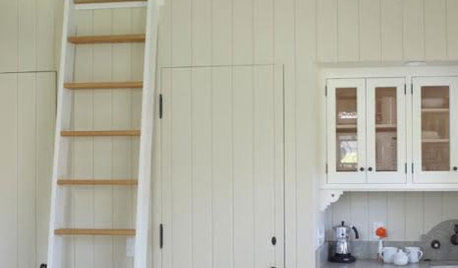Is humanure possible/likely on a large scale?
rutgers1
16 years ago
Related Stories

DECORATING GUIDESLarge-Scale Pieces Give Small Rooms Massive Style
Work bigger elements into a diminutive space and watch its design cred grow by leaps and bounds
Full Story
HOUZZ TOURSMy Houzz: Entertaining Possibilities in the Hamptons
From intimate dinner parties to large gatherings outdoors, this gracious home handles get-togethers with beachy elegance
Full Story
DECORATING GUIDESTwo Sofas Double the Design Possibilities
Some things are better in pairs. Double sofas can help awkwardly shaped and extra-large rooms look their best and provide maximum comfort
Full Story
DECORATING GUIDES5 Decorating Tips for Getting Scale Right
Know how to work art, sectionals, coffee tables, lamps and headboards for a positively perfect interior
Full Story
DECORATING GUIDESHow to Use Full-Scale Decor to Make a Small Space Feel Bigger
With a less-is-more approach, even oversize furnishings can help a compact area seem roomier
Full Story
DECORATING GUIDESDownsizing Help: Color and Scale Ideas for Comfy Compact Spaces
White walls and bitsy furniture aren’t your only options for tight spaces. Let’s revisit some decorating ‘rules’
Full Story
ROOM OF THE DAYRoom of the Day: Right-Scaled Furniture Opens Up a Tight Living Room
Smaller, more proportionally fitting furniture, a cooler paint color and better window treatments help bring life to a limiting layout
Full Story
COASTAL STYLEFishy Business: Tilt the Scales With Aquatic Decor
A marine element can add a splash of whimsy to your home
Full Story
SMALL HOMESEasy Green: 10 Tiny Homes That Live Large
Go ahead, micromanage. These 10 inventive spaces show how to pack a lot of living and style into small square footage
Full Story
LIVING ROOMSLay Out Your Living Room: Floor Plan Ideas for Rooms Small to Large
Take the guesswork — and backbreaking experimenting — out of furniture arranging with these living room layout concepts
Full Story


Kimmsr
bryanccfshr
Related Discussions
Treating scale on large, very-leafy plants?
Q
Larg-scale direct-sowing issues
Q
Possible scale infestation?
Q
Large-scale amendment in tree planting
Q
dorisl
gardenlen
debnh
fertilizersalesman
bryanccfshr
outsiders71
seedboy
bryanccfshr
rdak
habitat_gardener
vance8b
bryanccfshr
jmmedeiros
Kimmsr
bob64
jer213
habitat_gardener
joepyeweed
bob64
rdak
joepyeweed
paulns
gardenlen
strouper2
Belgianpup
habitat_gardener
strouper2
gardenlen
rutgers1Original Author
paulns
curtludwig
the_virginian
digdirt2
the_virginian
dizzyjane
esobofh
the_virginian
petzold6596
strmrnnr
rj_hythloday
ptilda
wastetech
gardenlen